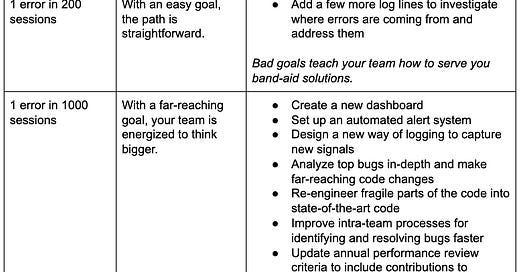A North Star goal to “suck less” can help you build the next big thing
Co-written by Adrienne* and Alexis
A few years ago, I* was frustrated at work, because we were focused on bug smashing and not on launching new products. It felt as if we were in a lull of endless debugging and no longer moving towards our vision of making the car a fun and entertaining place to be. We often think of north stars as additive e.g. “increase the number of rides per week” (Uber), but I’ve realized that north stars change depending on the lifecycle of the org or company. They don’t always have to be positive — sometimes a north star can be a negative reduction, for example, “We want to suck less.”
Counterintuitively, this is the winning strategy for many product teams working on early products. For example, if you’re working on a product struggling with profitability, then driving costs down could be the table stakes before the team can work on anything else. The North Star for Uber’s micro-mobility team might be “reduce the cost per charge of each scooter” because they realize paying people to charge scooters is their biggest cost and will need to drive it down to make their scooter business viable.
These goals can be energizing for your team: get the table stakes right, so that you have the mental and engineering capacity to build the next big feature.
If you are building a mobile app, for example, a goal of “drive the number of errors down from 1 error per 100 sessions to 1 error per 200 sessions in the next 6 months” can be really energizing for your team. You can take it a step further by setting an even more aggressive goal: “1 error per 1000 sessions.”
Regular goal: 1 error per 200 sessions in 6 months
Aggressive goal: 1 error per 1000 sessions in 6 months
This aggressive goal might feel scary at first -- which is paradoxically, a sign that it is a good goal. Scary goals are inspiring (see memo on goal-setting). If a number sounds scary, it is a signal to your team to push the bounds of what they're comfortable with. You may already know the roadmap to getting to 1 error in 200 sessions, but if it’s suddenly 1000 sessions, that will require more creative thinking.
Aggressive numbers motivate your team to think outside the box -- the level of insight you need to get to 200 sessions is an order of magnitude different compared to what you would need to get to 1000 sessions.



